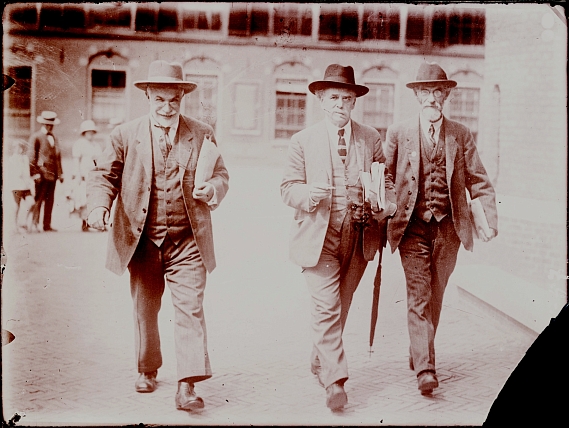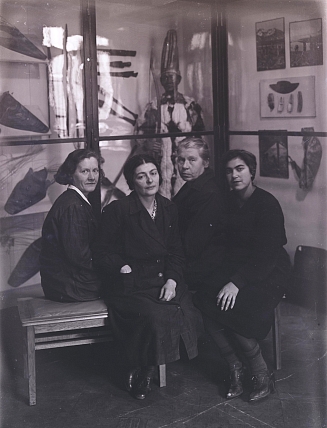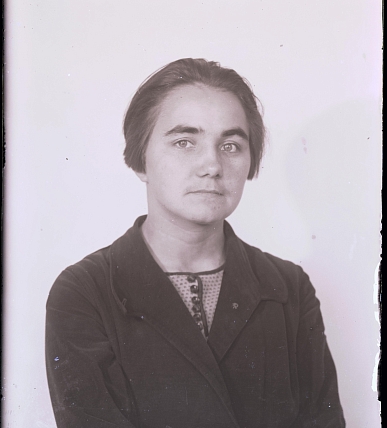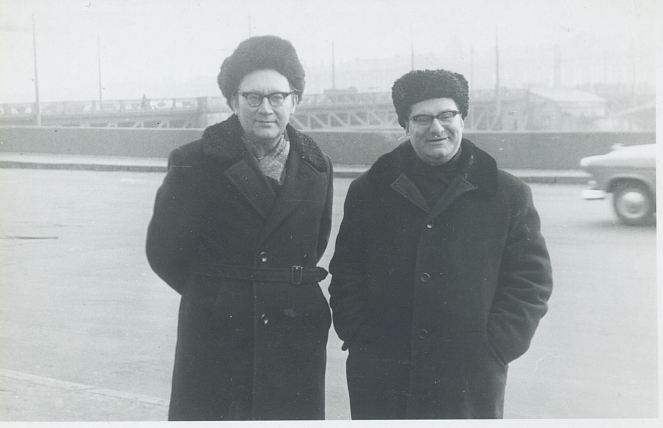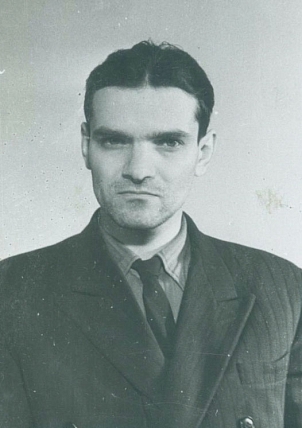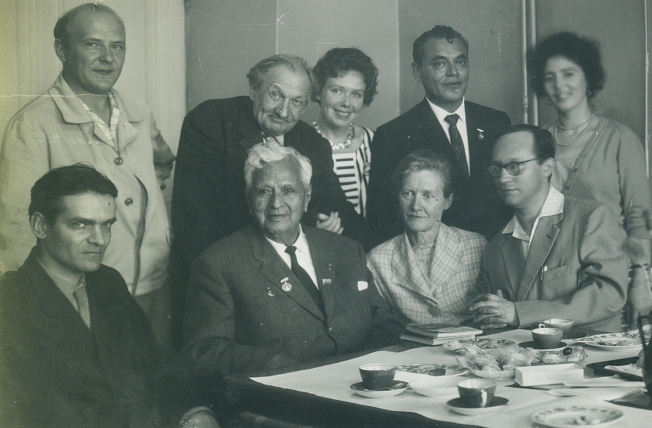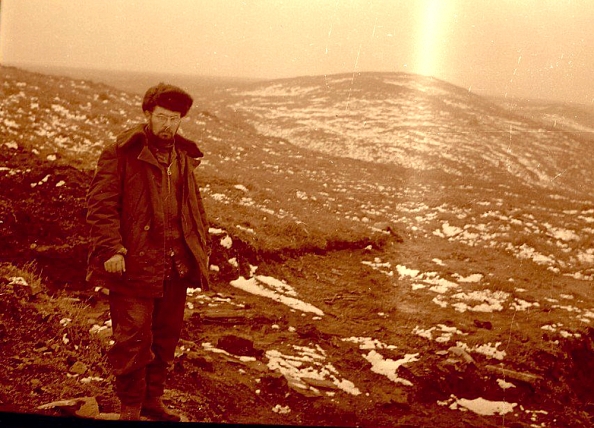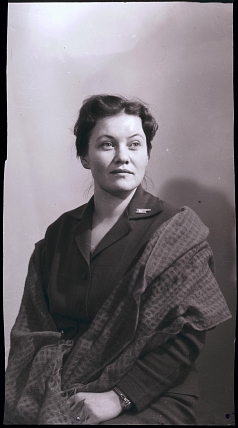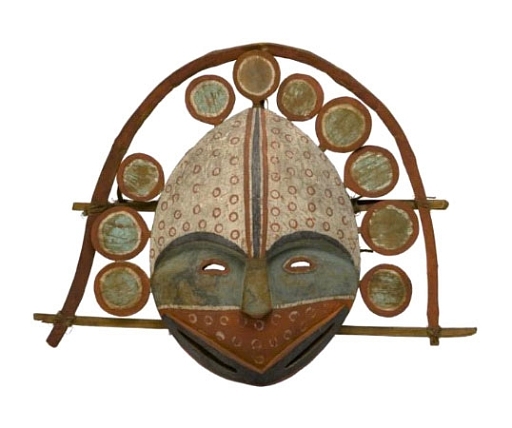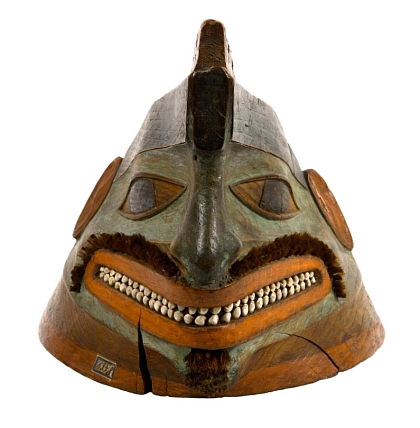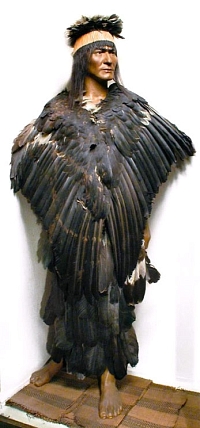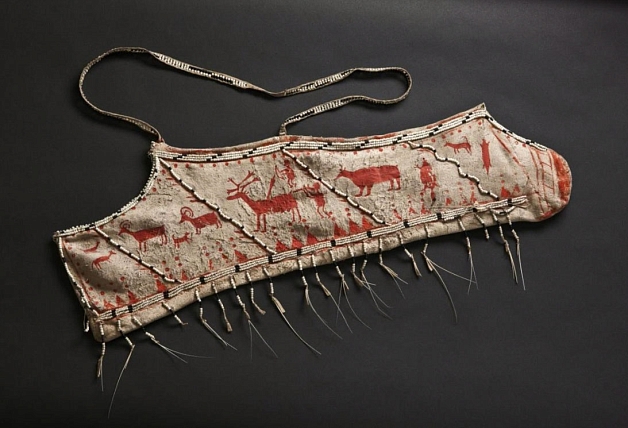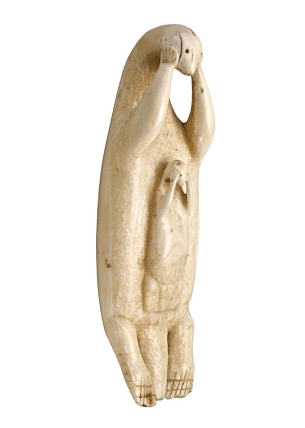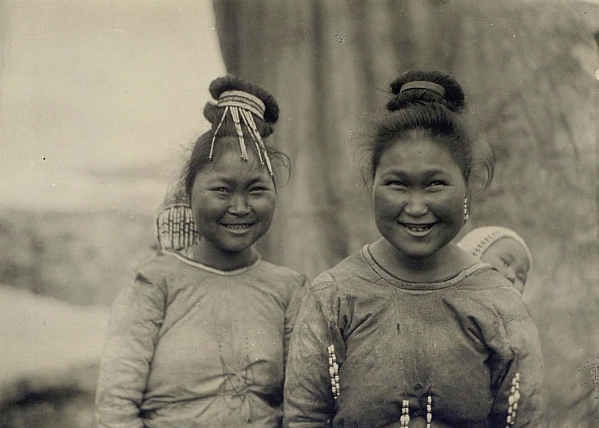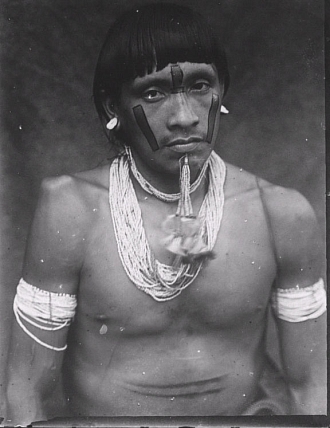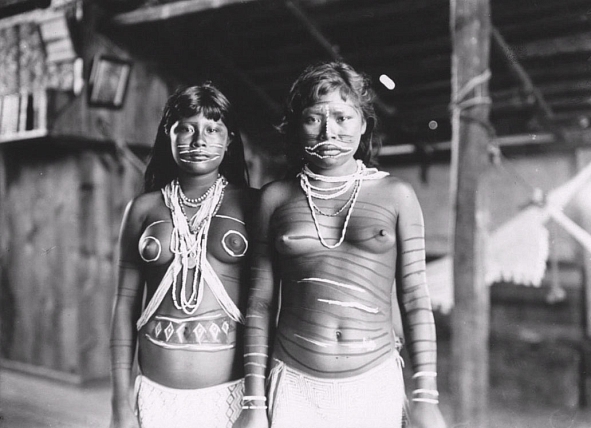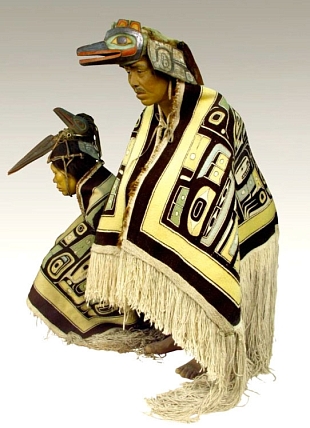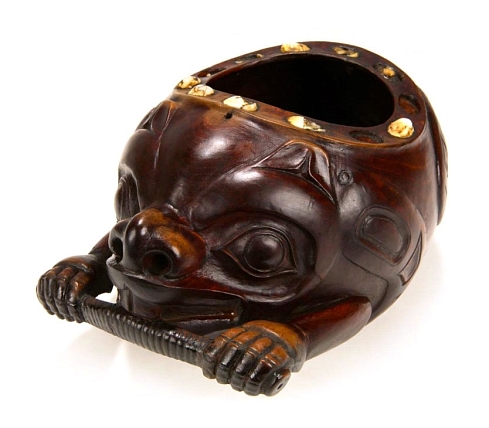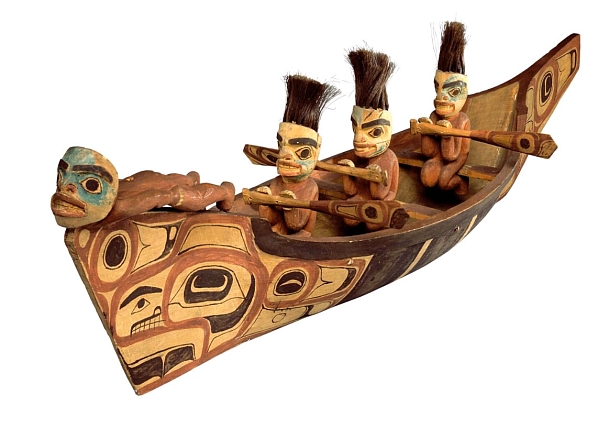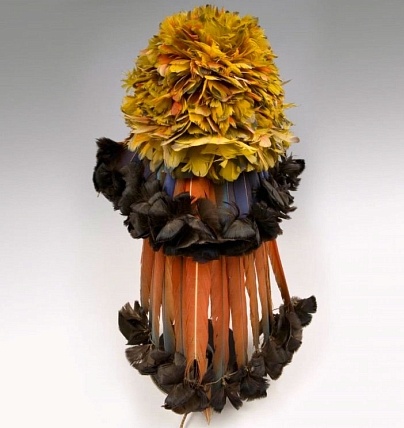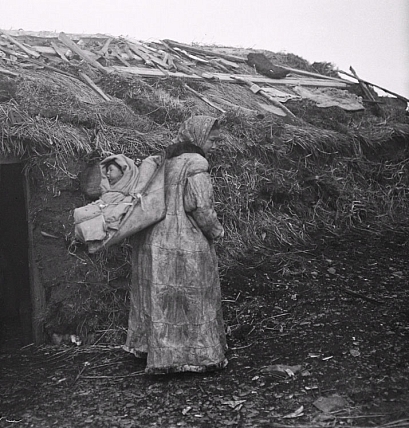- Administration
- Research Departments
- Arctic Research Center
- Europe Research Center
- Department of Australia, Oceania and Indonesia
- Department of America
- Department of Physical Anthropology
- Department of Archeology
- Department of Africa
- Department of East and Southeast Asia
- Department of Caucasus
- Department of Siberia
- Department of Central Asia
- Department of South and Southwest Asia
- Department of the History of Kunstkamera and 18th-century Russian Science (M.V. Lomonosov museum)
- Laboratory of Audiovisual Anthropology
- Laboratory "The International Center of Islamic Studies"
- Laboratory of Museum Technologies
- Management and Museum Services
Department of America
Contact Information
Address: 3, Universitetskaya nab., St.-Petersburg, 199034
Phone: +7 (812) 328-41-52
E-mail: america@kunstkamera.ru
Head of Department
Yuri BEREZKIN, Doctor of Sciences (areal distribution of folk and mythological motives as source of data on ancient cultural and migration processes; peopling of America; early complex societies; iconography of ancient Peru; archeology of Western and Central Asia).
Department Staff
Lyubov DMITRENKO, Junior Researcher (development of ancient cultures in the territory of Argentina; binocular studies of the ancient ceramics manufacturing technology; history of forming of archeological collections from Argentina in the archive of the MAE RAS; ancient ceramics manufacturing technology in South America; Alberto Vojtech Frič and history of the MAE collections).
Yevgenii DUVAKIN, Researcher, Candidate of Sciences (folklore, ethnography, iconography, and ethnic history of peoples of Siberia, Central Asia, and North America; areal distribution of folk and ethnological motives in the historical view; Eurasian-American relations in the field of ethnography and iconography, and reconstruction of the culture of early migrants to the New World).
Olga KONDAKOVA, Junior Researcher (Mexican collections of the MAE; Mexican folk arts and crafts; Mexican pottery; Tonala ceramics; Huichol Indians).
Oksana YANSHINA, Senior Researcher, Candidate of Sciences (features of paleoethnological development of the southern part of Russia’s Far East in the Neolithic and Paleometallic; ceramics as archeological and historical source).
History of the Department
The America Department, as other scientific departments of the MAE, was established in 1912. L. Ya. Sternberg became its first Head, with S. A. Ratner-Sternberg as his assistant. A new department of Central and South America was established in 1919, with V. G. Bogoraz as its head. In the 1930s, departments were several times renamed “groups,” “rooms,” or “sections,” they united with and disunited from each other. In that period, the ethnography of American peoples was studied in the MAE by N. G. Shprintsin, E. V. Zibert, Yu. P. Averkieva, and Ye. E. Blomqvist. In 1942, the America Department was closed due to evacuation of the Museum’s personnel from the blockaded Leningrad. After the end of the World War II, a sector of America, Australia and Oceania was set up in the Museum. The principal task of the staff was to restore the exhibitions.
The first exhibitions on the culture of peoples of America appeared as early as in the 19th century. The current exhibition was basically created in the early 20th century, dismantled during the World War I, re-opened in 1925, and dismantled again for the time of the Blockade. A North America exhibition was opened for visitors in 1948, and a Central and South America exhibition, in 1952. The mannequins for the North America room were made in the early 20th century, and for the South America room, in the 1920s – early 1950s. They were made to suit particular scenes depicting the life of American Indians and Eskimos, and precisely represent the anthropological features of various peoples. A large part of the Mexican exposition perished in the fire of 1937.
The post-war period saw a turnover of America research personnel in the MAE. R. G. Lyapunova was employed in 1952, Yu. V. Knorozov in 1953, and R. V. Kinzhalov (previously in the Oriental Department of the Hermitage) and D. A. Sergeev, in 1957. The America sector was restored as an independent structural unit in 1963 after a break of 21 years. This was due to the initiative of R. V. Kinzhalov who headed the sector and remained in charge of it until 1991. During his leadership, Yu. V. Knorozov (1963), A. D. Dridzo (1963), G. I. Dzeniskevich (1969), and Yu. Ye. Berezkin (1973) joined the Department. E. Ye. Zibert continued working in the Department. She never was a major figure in the world of science, but due to her knowledge of languages and general education she played an important role in preserving the scientific traditions and in maintaining contacts with colleagues abroad. The late 1950s – 1970s were very fruitful years for Russian students of America. In that time, the principal monographs of R. V. Kinzhalov were published, in particular his translation of Popol Vuh; Yu. V. Knorozov made decisive steps in the decoding of the Maya writing system and became world-famous, albeit with a delay. However, as it was impossible not only to do field research, but even to visit European and American museums, the Russian America studies had no prospects ahead. To an extent, the situation was saved by the still permitted correspondence with the outside world and by visits of foreign scientists to Leningrad.
In the period of 1991-2002, G. I. Dzeniskevich was the Head of the Department of American Peoples of the MAE RAS, with Ye. A. Okladnikova and N. Ch. Taksami among the staff. The period from the late 1980s till the early 2000s became a time of decline for the MAE in general and for the America sector in particular, The South America exhibition was dissolved, in fact crushed, as some of the mannequins were lost.
Yu. Ye. Berezkin has been Head of the Department of America since January 2003 (in 1987-2002 he worked in the Leningrad Branch, Institute of Archeology/Material Culture History Institute of the RAS). His principal interests are peopling of the New World, study of ancient migrations and cultural relations based on the data of areal distribution of folk and mythological motives, and early complex societies). The Department staff includes S. A. Korsun (“Russian America” sources, Alaskan peoples’ ethnography), O. V. Yanshina (early ceramics and Iron Age of the Far East), L. M. Dmitrenko (material culture of South American Indians), O. V. Kondakova (Mexican folk arts and crafts), and Ye. N. Duvakin (ethnography and folklore of peoples of Siberia and North America in the comparative historical view).
In more than 100 years of the research history, the America students who worked with MAE have published about 1,500 articles and about 50 monographs dedicated to the culture of Indians and Eskimos (Asian included). All the works are based on study of collections kept in the MAE, on published sources, and partially on materials of Russian archives. However, due to the ability to go abroad and learn collections outside Russia, the conditions for research are more favorable now than in the Soviet time. The most important result of the recent decade is the publication of complete, well-illustrated collection catalogues (Tlingits, Kodiak people, and Aleuts; the preparation of a Californian catalogue is near its completion), some (Kodiak) in the English version. In relation to their work on the catalogues, Yu. Ye. Berezkin and S. A. Korsun have visited Alaska several times, while American colleagues and representatives of Indian communities have visited St. Petersburg.
Essential topics of research
The principal scientific domain of the Department’s staff is traditional spiritual and material culture of North and South America and the generation history and attribution of the America Department’s collections. Currently, Russia’s greatest specialists in ethnography and history of North and South America work with the Department.
Under the program of fundamental research of State Academies of Sciences for 2013-2020, fundamental research for the following projects (research topics) is being done in 2017-2019:
- History of the MAE RAS and its collections in the context of development of human science. Supervisor: Yu. K. Chistov, Doctor of Sciences, Director. Topic: Culture of peoples of America according to the MAE RAS archive materials, supervisor: S. A. Korsun.
- Generation of the ancient and modern population of Eurasia and America according to data of ethnology, physical anthropology, and archeology. Supervisors: Yu. Ye. Berezkin, Doctor of Sciences (Head of the Department of Ethnography of America), V. I. Khartanovich, Candidate of Sciences (Head of the Department of Anthropology), G. A. Khlopachov, Candidate of Sciences (Head of the Department of Archeology).
Essential Publications
- Averkieva J., Sherman M.A. Kwakiutl String Figures. Seattle, 1992.
- Berezkin Y.E., Korsun S.A. North America: Exhibition guide (Series “Halls of Kunstkamera”) / Eds. Y.K. Chistov, K.A. Nosovskaya. — Saint-Petersburg: MAE RAS, 2008. — 96 p.
- Korsun S. The Alutiit / Sugpiat: A Catalog of the Collections of the Kunstkamera. Fairbanks: University of Alaska Press, 2012.
- Korsun S., Black L. Herman A Wilderness Saint: from Sarov, Russia to Kodiak, Alaska. — Jordanville, New York: Holy Trinity Publications, 2012. — 243 p.
- Liapunova R.G. Essays on the Ethnography of the Aleuts: (At the End of the eighteenth and the first half of the Nineteenth Century). Fairbanks: University of Alaska Press, 1996.
- Siebert E., Forman W. Indianerkunst der amerikanischen Nordwestküste. Praha, 1967.
- Siebert E., Forman W. North American Indian Art: Masks, Amulets, Wood Carvings and Ceremonial Dress from North-West Coast. London, 1967.
- Siebert E., Forman W. El arte de los índios norteamericanos de la Costa del Noroeste. México, 1967.
- Varjola P., Averkieva J.P., Liapunova R.G. The Etholen Collection: The ethnographic Alaskan collection of Adolf Etholen and his contemporaries in the National Museum of Finland. Helsinki, 1990.
In Russian:
- Averkieva Yu. P. Rabstvo u indeitsev Severnoi Ameriki [Slavery practiced by the North American Indians]. Moscow; Leningrad, 1941.
- Aleuty: Katalog kollektsiy Kunstkamery [The Aleuts: Catalogue of the Kunstkamera collections] / Author and compiler: S. A. Korsun, publication editor: Yu. Ye. Berezkin. St. Petersburg: MAE RAN, 2014.
- Arutyunov S. A., Sergeev D. A. Drevniye kultiry aziatskikh eskimosov (Uelenskiy mogilnik) [Ancient cultures of the Asian Eskimos (the Uelen burial)]. Moscow, 1969.
- Arutyunov S. A., Sergeev D. A. Problemy etnicheskoi istorii Beringomorya (Ekvenskiy mogilnik) [Issues of the ethnic history of the Bering Sea Coast]. Moscow, 1975.
- Berezkin Yu. Ye. Mochika: Tsivilizatsiya indeitsev Severnogo poberezhya Peru v I-VII v. [Mochica: The civilization of the North Peru coast Indians in the 1st-7th centuries AD]. Leningrad, 1983.
- Berezkin Yu. Ye. Inki. Istoricheskiy opyt imperii [Incas. Historical experience of the empire]. Leningrad, 1991.
- Berezkin Yu. Ye. Mify zaselyayut Ameriku: Arealnoye raspredeleniye folklornykh motivov and ranniye migratsii v Novyi Svet [Myths populating America: Areal distribution of folklore motives and early migrations to the New World]. Moscow, 2007.
- Berezkin Yu. Ye. Mify Starogo i Novogo Sveta [Myths of the Old and New World] = Iz Starogo v Novyi Svet: Mify narodov mira. Moscow, 2009.
- Berezkin Yu. Ye. Mezhdu obschinoi i gosudarstvom. Srednemasshtabnye obschestva Nuklearnoi Ameriki i Perednei Azii v istoricheskoi dinamike [Between a community and a state. Medium-scale societies of Nuclear America and Near East in historical dynamics ]. St. Petersburg: MAE RAN, 2013.
- Berezkin Yu. Ye. Afrika, migratsii, mifologiya. Arealy rasprostraneniya folklornykh motivov v istoricheskoi perspektive [Africa, migrations, mythology. Areas of distribution of folklore motives in the historical view]. St. Petersburg: Nauka, 2013.
- Berezkin Yu. Ye. Rozhdeniye zvyozdnogo neba. Predstavleniye o nochnykh svetilakh v istoricheskoi dinamike [Birth of the starry heaven. Concept of celestial bodies of the night in historical dynamics]. St. Petersburg: MAE RAN (2017, under editing).
- Berezkin Yu. Ye., Korsun S. A. Severnaya Amerika: Putevoditel (Seriya “Zaly Kunstkamery”) [North America: A Guide (”Kunstkamera Rooms” series)]/ Ed. by Yu. K. Chistov and K. A. Nosovskaya. St. Petersburg: MAE RAN, 2008, 96 pp.
- [Blomqvist Ye. E.] Otdel Severnoi Ameriki. Putevoditel [North America Department. A Guide]. Moscow; Leningrad, 1936.
- Bogoraz, V. G. Materialy po yazyku aziatskikh eskimosov [Materials on the language of the Asian Eskimos] / Ed. by I. S. Vdovin. Leningrad, 1949.
- Vasiliev S. A., Yu. Ye. Berezkin, A. G. Kozintsev. Sibir i pervye amerikantsy [Siberia and first Americans]. St. Petersburg: IIMK RAN, MAE RAN, 2009.
- Vasiliev S. A., Yu. Ye. Berezkin, A. G. Kozintsev, I. I. Peiros, S. B. Slobodin, A. V. Tabarev. Zaseleniye chelovekom Novogo Sveta: opyt kompleksnogo issledovaniya [Peopling of the New World: Attempt at an integrated study]. St. Petersburg: Nestor-Istoriya, 2015.
- Dzeniskevich G. I. Atapaski Alyaski. Ocherki materialnoi I dukhovnoi kultury. Konets XVIII – nachalo XX v. [Alaskan Athabaskans. Sketches on their material and spiritual culture. Late 18th – early 20th century]. Leningrad, 1987.
- Dridzo A. D. Yamaiskiye maruny. Istoriko-etnograficheskiy ocherk [Jamaican Maroons. Historical/ethnographical essay]. Moscow, 1971.
- Kinzhalov R. V. Popol-Vuh. Rodoslovnaya vladyk Totonikapana [Popol-Vuh. Ancestral line of the Lords of Totonikapan]. Translated and subedited by R. V. Kinzhalov. Moscow-Leningrad: USSR RAS Press, 1959.
- Kinzhalov R. V. Iskusstvo drevnei Ameriki [Art of ancient America]. Leningrad, 1962.
- Kinzhalov R. V. Iskusstvo drevnikh maya [Art of ancient Maya. Leningrad, 1968.
- Kinzhalov R. V. Kultura drevnikh maya [Culture of ancient Maya]. Leningrad, 1971.
- Kinzhalov R. V. Orel, ketsal i krest. Ocherki po kulture Mesoameriki. [Eagle, Quetzal, and cross. Sketches on the Mesoamerican culture] St. Petersburg: Nauka, 1991.
- Knorozov Yu. V. Sistema pisma drevnikh maya [Writing system of ancient Maya]. Moscow, 1955.
- Knorozov Yu. V. Pismennost indeitsev maya [Script of the Maya Indians]. Moscow; Leningrad, 1963.
- Knorozov Yu. V. Ieroglificheskiye rukopisi maya [Hieroglyphic manuscripts of the Maya]. Leningrad, 1975.
- Korsun S. A. Amerikanistika v Kunstkamere (1714-2014) [American studies in the Kunstkamera(1714–2014) / Publication editor: Yu. Ye. Berezkin. St. Petersburg: MAE RAN, 2015, 504 pp., ill.
- Korsun S. A. Prepodobnyi German Alyaskinskiy, valaamskiy podvizhnik v Amerike [Reverend German of Alaska, the Valaam ascetic in America]. St. Petersburg: Izdatelstvo “Uchrezhdeniye Masterskiye Valaamskogo monastyrya,” 2005, 184 pp.
- [Korsun S. A., Taksami N. Ch., Ushakov N. V.] Sokrovischa Kunstkamery. Aleuty: kakimi ikh uvidel V. Iohelson [Treasures of the Kunstkamera. The Aleuts: How W. Jochelson saw them]. St. Petersburg, 2001.
- Lyapunova R. G. Ocherki po etnografii aleutov (konets XVIII – pervaya polovina XIX v.). [Sketches on history of the Aleuts]. Leningrad, 1975.
- Lyapunova R. G. Aleuty. Ocherki etnicheskoi istorii [Aleuts. Sketches on their ethnic history]. Leningrad, 1987.
- Ratner-Sternberg S. A. Chernye i belye v Soedinennykh Shtatakh Ameriki [Blacks and whites in the United States of America]. Moscow; Leningrad, 1936.
- Sergeev D. A. Etnografy-arkheologi na Chukotke [Ethnographers-archeologists in Chukotka]. Leningrad, 1968.
- Sergeev D. A. Problemy etnicheskoi istorii severo-vostochnogo poberezya Azii. Avtoreferat dissertatsii na soiskaniye uchenoi stepeni doktora nauk [Issues of ethnic history of the north-eastern coast of Asia. Extended abstract of a Dr. Sci. thesis]. Moscow, 1974.
- Tlinkity: Katalog kollektsiy Kunstkamery [Tlingits: Catalogue of the Kunstkamera’s collections]/ Publication editor: Yu. Ye. Berezkin, texts and abstracts: S. A. Korsun. St. Petersburg: MAE RAN, 2007.
- Sternberg L. Ya. Semya i rod u narodov Severo-Vostochnoi Azii [Family and tribe of peoples of North-Eastern Asia]. Leningrad, 1933.
- Sternberg L. Ya. Pervobytnaya religiya v svete etnografii. Issledovaniya, statyi, lektsii [Primeval religion in the light of ethnography. Studies, articles, lectures]. / Ed. by Ya. P. Alkor. Leningrad, 1936.
